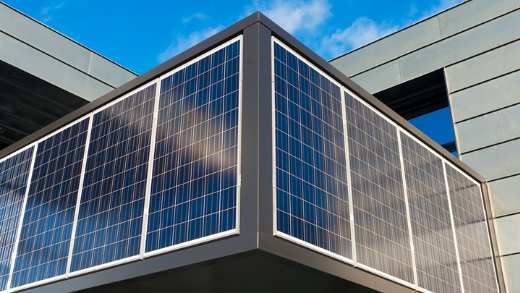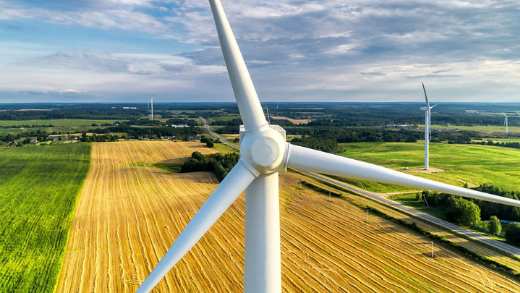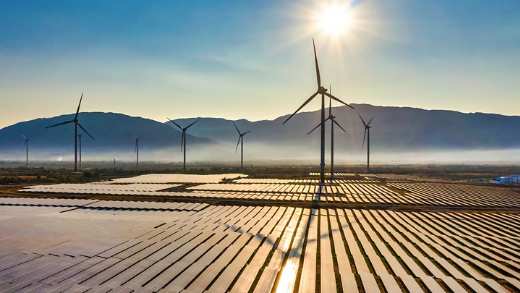Benign macroeconomic conditions have boosted infrastructure investments over the past decade. But with higher interest rates, investors in the asset class will have to show they can create true value, says Darryl Murphy.
Read this article to understand:
- How the shifting macroeconomic environment is affecting infrastructure investment
- The need to adapt investment strategies for the climate transition
- How infrastructure investors can access opportunities in early-stage technologies
Markets can be slow to react to change. In their recent book Radical Uncertainty, economists John Kay and Mervyn King put the blame on human psychology, arguing investors often retreat to a “comfort zone…by trying to limit themselves to a small, stationary world”.1
This is a big problem, not least because the world is big and dynamic. Geopolitical risk is back on the agenda, with Russia’s invasion of Ukraine destabilising European markets and stoking energy prices. Central banks have aggressively raised interest rates to tame inflation, upending an easy monetary-policy regime that had endured since the end of the financial crisis more than a decade ago.
At the same time, climate change has gone from a seemingly remote threat to a clear and present danger. Policymakers are introducing regulations to decarbonise economies and promote sustainable industries. Exciting green technologies are rapidly emerging, while older, energy-inefficient assets are becoming obsolete.
As a long-term investment, infrastructure is often assumed to be relatively immune from market ructions: one of its key attractions is that it tends to offer stable and consistent returns whatever the macroeconomic backdrop. But the dramatic developments of recent years bring significant implications for infrastructure investors, who must be prepared to leave their comfort zone to tackle them.
The tide turns
To understand why, we need to look at the history. Infrastructure is still a relatively young asset class – and an extremely heterogenous one. As the market matured over the last two decades, a taxonomy developed to categorise a vast array of assets based on risk. “Core” refers to mainstream projects such as airports and motorways; “Core-plus” and “Value-add” to more unusual and potentially riskier investments, such as fibre networks.
After the financial crisis of 2007-’09, low interest rates prompted a flow of capital towards relatively higher-yielding alternative assets. This trend drove up valuations across the board, enabling investors to take advantage of spread compression. This was especially true in sectors such as wind- and solar-power generation, which benefited from government subsidies as the energy transition gathered pace. But even a simple allocation approach based on the direction of the overall market – beta – would have paid off.
Many infrastructure assets proved resilient during the coronavirus-related economic turmoil
Then COVID-19 hit. Many infrastructure assets proved resilient during the coronavirus-related economic turmoil, which only bolstered the investment case and attracted further inflows. Infrastructure funds raised $136.5 billion in 2021, up from just over $100 billion five years earlier.2
Now the landscape is changing. With inflation and interest rates surging, the tide of cheap credit is starting to ebb. While some infrastructure assets benefit from inflation protection, thanks to regulation or contractual agreements, escalating construction costs are hampering new development.
Meanwhile, higher rates are not only making debt financing more costly but also resulting in a downwards revision of asset values. Infrastructure projects are valued by discounting future cashflows against a premium to the “risk-free” rate. This means that, all else being equal, a rise in interest rates will lead to a fall in valuations.
A new playbook
The impact is already evident in listed infrastructure. Total returns on the Global Listed Infrastructure Organisation (GLIO) Index, which tracks the performance of infrastructure equity funds, were down 5.8 per cent in 2022, compared with a positive return of 14.9 per cent in 2021.3
While valuations among private infrastructure assets have not yet fallen appreciably – partly because private markets tend to lag public markets – we expect this to happen over the first half of 2023.
Infrastructure will still be an attractive prospect in the new macroeconomic regime
The key characteristics of infrastructure remain and the asset class will still be an attractive prospect in the new macroeconomic regime. But as valuations correct, investors will have to pay closer attention to the risk-return dynamics of each asset and the prospects for cashflows and EBIDTA rather than relying on ever-increasing demand to support returns.
Owning established Core infrastructure and collecting yield, in the comfortable expectation the asset will sell for a higher price in five years’ time, will no longer be such a lucrative strategy. Investors will need to find ways to organically grow infrastructure businesses and improve the earnings potential of individual projects, with discerning asset selection and management skill likely to become key differentiators.
One way to adapt to this new environment is to look beyond mature assets and team up with developers with a track record of bringing successful projects to market. Such partnerships can provide access to a pipeline of assets at different stages, from pre-planning through to shovel-ready developments. This will provide scope for investors to get ahead of the competition, create value and drive better returns.
Future-proofing portfolios
As well as closer scrutiny of individual projects, the ability to parse longer-term thematic trends will be increasingly important. Infrastructure investors will need to be able to identify key economic, political and technological developments to identify the right assets. The risk profile of different types of infrastructure is likely to change as these trends play out, necessitating a continual reassessment to future-proof portfolios.
For example, investors have crowded into Core wind- and solar-power assets that benefited from rising demand and favourable regulation during the early stages of the climate transition. But other types of infrastructure could prove equally attractive over the coming years as policies evolve and consumption patterns change.
Electric-vehicle (EV) charging networks, for instance, will enable economies to switch to cleaner transport and help remove petrol-guzzling cars from the road. Estimates suggest the UK will need 400,000 public EV-charging points by 2030 and approximately 2.5 million by 2050 to support the EV transition. Capital from institutional investors will be necessary to deliver on these targets and opportunities are already emerging.4
Digital infrastructure is another good example. Fibre broadband is three times more energy efficient than copper and its speed enables people to work remotely rather than commute into an office, mitigating transport-related emissions. Other long-term trends such as the rise of smart cities and the internet of things are likely to increase overall data consumption, too. From an investment perspective, greenfield fibre broadband can offer a discount to operational assets in better-established sectors and generate attractive yield premiums to compensate for construction risk.
Early-stage opportunities
EV charging and fibre broadband are proven technologies. But as the climate transition accelerates, infrastructure investors will also have to be nimbler in identifying the impact of early-stage innovations so they can access opportunities ahead of the competition.
Take hydrogen. According to a recent report from the World Bank, demand for hydrogen will grow from 87 million metric tonnes (MT) in 2020 to 500-680 million MT by 2050, with the hydrogen production market growing by more than nine per cent a year until 2030.
Around 95 per cent of hydrogen is currently produced using fossil fuels, but there is growing interest in the potential for clean hydrogen, created using electricity from renewable power, as a fuel source to help decarbonise various “hard-to-abate” industries. These include chemicals, iron and steel, where it is proving difficult to reduce emissions using existing methods.5
While it may be some time before hydrogen infrastructure becomes a commercially viable proposition for most investors, governments are already moving to create regulatory and policy incentives to mobilise private capital. The UK has cited hydrogen as part of its ten-point plan for achieving net zero; it aims to de-risk early projects to attract over £4 billion of private investment to the sector by 2030, likely through the Contract for Difference (CfD) and Regulated Asset Base (RAB) financing models that have successfully attracted capital to the offshore wind and utilities sectors.6
Carbon capture and storage technology, zero-emission buses and sustainable aviation fuel production are other potential areas of opportunity. In each case, investors could play a key role by working with industrial sponsors and governments to transform these new technologies into mature infrastructure. But patience will be necessary, as will an in-depth analysis of the risk-return dynamics over short, medium and long-term time horizons.
Investors will have to leave their comfort zones to grasp the risks and seize the opportunities
As these interconnected trends play out, infrastructure investing could be radically transformed. Rising rates, technological innovation and climate change mean the next 20 years of infrastructure investment will look very different from the last 20. But one thing is certain: investors will have to leave their comfort zones to grasp the risks and seize the opportunities.

















